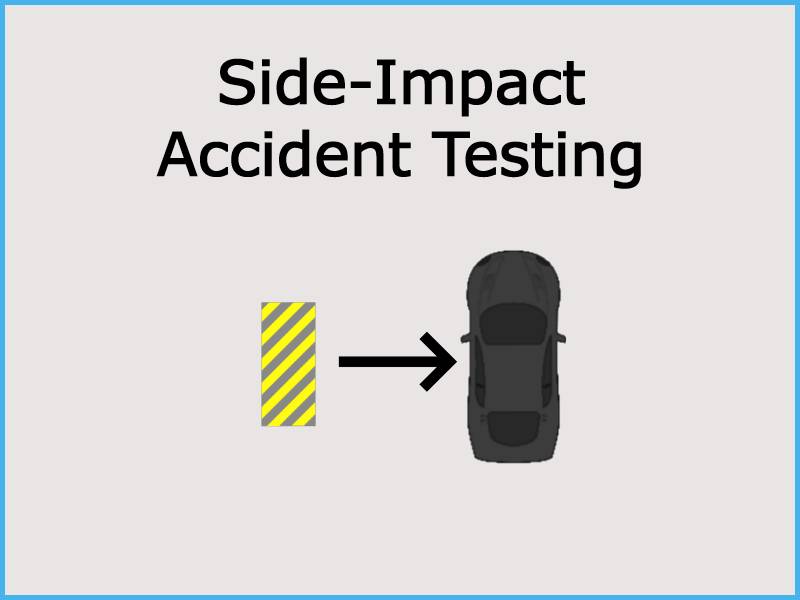Side-Impact Testing IIHS vs NHTSA
In a broadside collision, you need a vehicle that performs well in side-impact crash testing. The Insurance Institute of Highway Safety (IIHS) and National Highway Traffic Safety Administration NHTSA perform their side-impact testing in different ways. It is important to know the differences as a consumer. Vehicles can perfectly meet the highest standards of the NHTSA test while failing to do so on the IIHS test. In this post, we will go over the specifics of each testing method. Specifically, the side-impact testing methods. You can learn about the other tests in another post.
It is important to know early on that one test is not necessarily "better" than the other. They test different types of side-impact accidents. That being said, some claim that the IIHS tests are better. This is because usually, a vehicle will get a higher NHTSA rating on evaluation as opposed to the IIHS testing. However, that is not always the case.
Side-Impact NHTSA Testing
The NHTSA has two different tests for evaluating side-impact safety. There is the side-barrier test and the side-pole crash test.
The NHTSA side barrier test represents a side-impact collision resulting from an accident in an intersection. A 3,015-pound barrier crashes at 38.5 mph into the driver's side of a standing vehicle. Two crash-test dummies are placed in the car. An average-sized adult male in the driver's seat and a small-sized female in the front passenger seat. The test dummies wear seatbelts in every test. To evaluate the crash they look at any potential injuries to the head, chest, abdomen, and pelvis.
The NHTSA side pole crash test represents a side-impact collision resulting from sliding sideways into a telephone pole. A 3,015-pound barrier crashes at 38.5 mph into the driver's side of a standing vehicle. One crash-test dummy is placed in the car. The dummy used is for an average small-sized female in the driver's seat. To evaluate the crash they look at any potential injuries to the head, chest, lower spine, abdomen, and pelvis.
Side-Impact IIHS Testing
The IIHS actually has two testing methods as of the publication of this blog post. The current side-impact crash testing method is being modified to increase the test difficulty. However, the new testing standards are currently being evaluated. As of this post, only some small SUVs have been tested. You can learn more about their new tougher side-testing method here. An interesting thing to note is that initially, vehicles struggled with side-impact testing when they were first created. Over the years vehicles became much better at this test. In response, the IIHS believes it is time to increase the difficulty of this test to better show the difference in the safety performance of different models.
Interestingly, IIHS testing aims to better simulate an SUV or truck rather than a sedan. The IIHS developed their testing a while after the NHTSA. Average accidents changed during this time. Consumers now largely prefer crossovers and trucks as opposed to small cars. So not only did the weight of the vehicles change, but also the height and shape of the front end of the "average" vehicle.
The current side-impact test uses a 3,300-pound solid barrier with the approximate height of an SUV. The collision is into the driver's side at 31 mph. Crash test dummies representing small-sized women are used. The dummies occupy the driver's seat and passenger seat directly behind the driver's seat. The engineers look at driver and passenger injuries, head protection, and structural performance.
IIHS vs NHTSA
As previously stated, neither test is necessarily better than the other. It is possible to design a car that would do better on the IIHS testing while doing worse on an NHTSA test. As such, we recommend paying attention to both safety ratings. It can be useful to also look into what potential motivation each organization may have.
Here at Johnson Law, we work on personal injury matters. That means we fight for regular people looking for fair compensation. Usually, this means fighting against insurance companies. As such, we always like to verify claims that come from insurers or other organizations associated with them. The IIHS operates as a non-profit. However, as the name implies, it is backed by insurance companies. In this case, the potential motivation is useful for the consumer. Insurance companies use crash test ratings to help determine the price to insure a particular vehicle. As such, they have a vested interest in accurate safety ratings. A car with an inaccurate safety rating would cost them money.
The NHTSA is a governmental organization. They have a structural bias towards maintaining the status quo. Updating testing standards requires going through the governmental bureaucracy. This has led to the IIHS having newer testing standards than that of the NHTSA.
Hillsboro Car Crash Lawyers
Have you or a loved one been injured in a car crash through no fault of yours? The experienced and capable Hillsboro car crash lawyers of Johnson Law may be able to help. We fight insurance companies in order to secure fair compensation for people like you.
We will review your case for free.
Pay us nothing unless we get you a better settlement.
We work on contingency.


